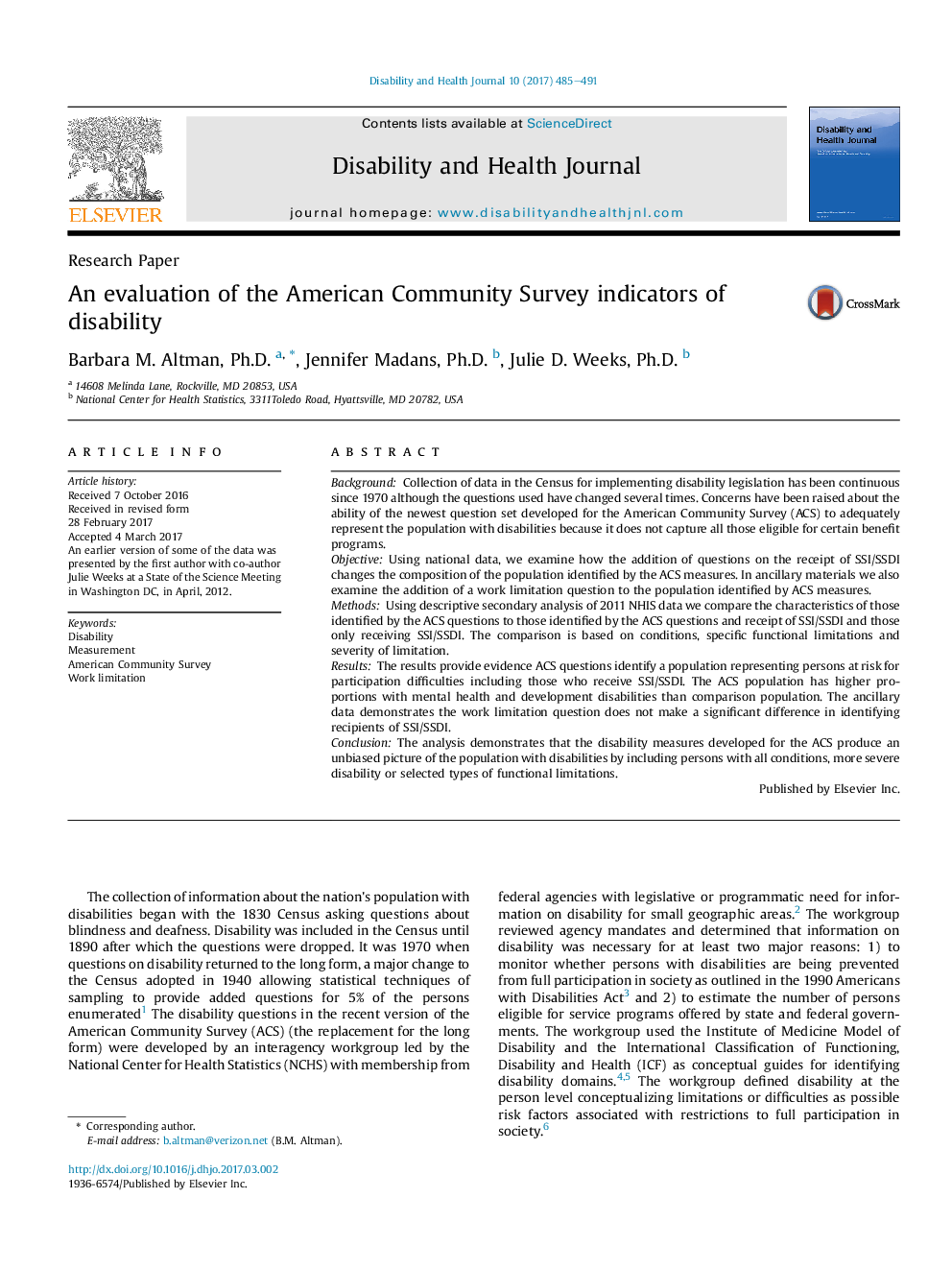| Article ID | Journal | Published Year | Pages | File Type |
|---|---|---|---|---|
| 5723161 | Disability and Health Journal | 2017 | 7 Pages |
BackgroundCollection of data in the Census for implementing disability legislation has been continuous since 1970 although the questions used have changed several times. Concerns have been raised about the ability of the newest question set developed for the American Community Survey (ACS) to adequately represent the population with disabilities because it does not capture all those eligible for certain benefit programs.ObjectiveUsing national data, we examine how the addition of questions on the receipt of SSI/SSDI changes the composition of the population identified by the ACS measures. In ancillary materials we also examine the addition of a work limitation question to the population identified by ACS measures.MethodsUsing descriptive secondary analysis of 2011 NHIS data we compare the characteristics of those identified by the ACS questions to those identified by the ACS questions and receipt of SSI/SSDI and those only receiving SSI/SSDI. The comparison is based on conditions, specific functional limitations and severity of limitation.ResultsThe results provide evidence ACS questions identify a population representing persons at risk for participation difficulties including those who receive SSI/SSDI. The ACS population has higher proportions with mental health and development disabilities than comparison population. The ancillary data demonstrates the work limitation question does not make a significant difference in identifying recipients of SSI/SSDI.ConclusionThe analysis demonstrates that the disability measures developed for the ACS produce an unbiased picture of the population with disabilities by including persons with all conditions, more severe disability or selected types of functional limitations.
